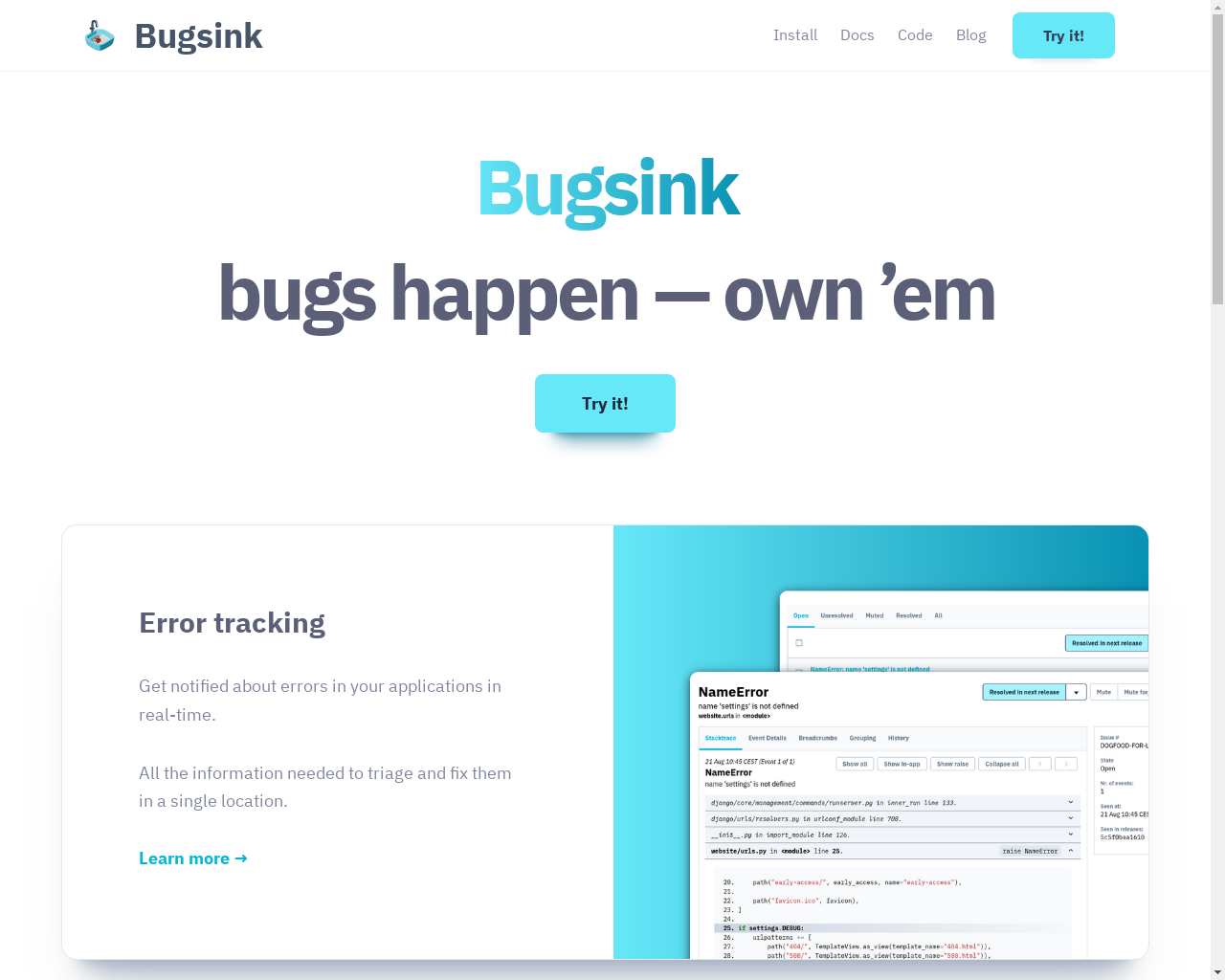

Highlight 1
Bugsink provides a clean and intuitive interface for stack trace analysis, making it user-friendly and easy to understand.
Highlight 2
The ability to self-host ensures greater control over data privacy and security, catering to organizations that prioritize these factors.
Highlight 3
It scales effectively to accommodate different application sizes and workloads, allowing teams to use it as their needs grow.

Improvement 1
While there are installation instructions, user documentation could be more comprehensive, providing examples of workflow and troubleshooting.
Improvement 2
As the product is still in beta, there might be some instabilities or bugs that need to be ironed out for a smoother user experience.
Improvement 3
Currently, the Python SDK is the most tested; expanding robust support to other languages would enhance usability across diverse programming environments.
Product Functionality
Enhance the integration options with more SDKs and libraries to cater to a wider audience.
UI & UX
Consider implementing a guided onboarding process for new users to familiarize them with key features quickly.
SEO or Marketing
Optimize the website for search engines with relevant keywords and content about self-hosted error tracking to attract more organic traffic.
MultiLanguage Support
Implement multi-language support to reach a broader international audience, making the tool accessible to non-English speakers.
- 1
What is Bugsink?
Bugsink is an error tracking tool that focuses on self-hosting, offering a user-friendly interface to manage and analyze error logs privately.
- 2
How do I install Bugsink?
Installation can be done using the command 'docker run' or 'pip install', with detailed steps available through the 'Try it!' button on the website.
- 3
Is Bugsink compatible with other SDKs?
Yes, Bugsink is compatible with the Sentry SDK and is designed to work with various programming languages, although the Python SDK is the most mature.
